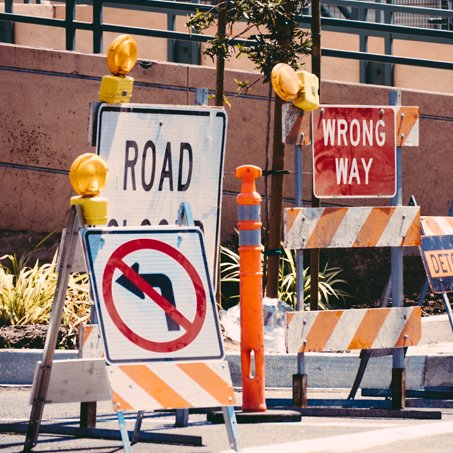Introduction
Buying a new car is an exciting milestone, but amidst all the features and options, safety should always come first. It’s no secret that seat belts are incredibly effective at preventing severe injuries and saving lives. However, not everyone follows this crucial safety guideline, leading to preventable injuries and fatalities. Recently, regulators have introduced a new regulation that penalizes rear-seat passengers for not wearing seat belts, emphasizing that safety is a top priority. This move, spurred by high-profile incidents like the tragic death of Cyrus Mistry, aims to send a clear message about the importance of seat belt use for all passengers—not just those in the front seats.
Modern vehicles come equipped with an array of advanced safety technologies designed to protect you and your loved ones on the road. From anti-lock braking systems to lane departure warnings and crash-avoidance systems, these features can make a world of difference in accident prevention and injury reduction. But is this measure alone enough to tackle the broader road safety crisis? According to the Ministry of Road Transport and Highways’ 2021-22 annual report, India witnessed 449,002 road accidents and 151,113 fatalities within a year. Even more concerning is the long-term trend: the number of deaths per 100 accidents has surged by over 33%, from 21.6 in 2005 to 33.7 in 2019.
Before you make your final decision, it’s essential to understand what safety features are available and why they matter. This guide will walk you through the critical car safety elements to consider, ensuring your next vehicle is as safe as it is stylish, while also highlighting the need for a multi-faceted approach to road safety that includes stronger enforcement and public awareness campaigns.

The focus in the aftermath is on the seat belt. The three-point seat belt engineered by Nils Evar Bohlin, a passive safety device first incorporated into a car by Volvo in 1959, and now standard in vehicles sold in India, is a low-cost restraint system that prevents occupants of a vehicle from being thrown forward in a crash.
In a car crash, particularly at moderate to high speeds, the driver or passenger with no seat belt continues to move forward at the vehicle’s speed, until some object stops the occupant. This could be the steering wheel, dashboard or windscreen for those in front, and the front seat, dashboard or windscreen for those in the rear.
The Centre for Road Safety at the Transport Department of New South Wales, Australia (NSW Centre), which has had a compulsory seat belt rule since 1971 explains that “even if the vehicle is fitted with an airbag, the force at which an unrestrained occupant strikes the airbag can cause serious injuries.
Without an airbag, and no seat belt restraint, a severe crash leads to the occupant of the rear seat striking the seat in front with such force that “it is sufficient for the seat mountings and seat structures to fail,” says the NSW Centre.
The seat belt performs many functions, notably slowing the occupant at the same rate as the vehicle, distributing the physical force in a crash across the stronger parts of the body such as the pelvis and chest, preventing collisions with objects within the vehicle and sudden ejection. Newer technologies to “pretension” the belt, sense sudden pull forces and apply only as much force as is necessary to safely hit the airbags.
Absence of seat belts could lead to rear seat occupants colliding with internal objects in the car, or even being ejected through the front windscreen during the collision.

Head restraints, which are found either as adjustable models or moulded into the seats, prevent a whiplash injury. This type of injury occurs mostly when the vehicle is struck from behind, leading to sudden extreme movement of the neck backwards and then forwards.
It could also happen vice versa in other circumstances. The injury involves the muscles, vertebral discs, nerves and tendons of the neck, says Johns Hopkins Medicine, and is manifested as neck stiffness, pain, numbness, ringing in the ears, blurred vision and sleeplessness among others.
The head restraint built into the seat must be properly placed and aligned with the neck, to prevent the injury in a vehicle accident. A study done by the Insurance Institute for Highway Safety (IIHS) in the U.S. estimated that claims for neck injuries were lower by 11% when the seats and restraints were rated good by it, compared to those rated poor.

Seat-belt safety is often ignored in India. Not many are aware of the rule that mandates rear seat belts. According to a recent road ministry report, the number of persons killed and injured because of not wearing a seat belt during 2020 stood at 15,146 and 39,102, respectively.
Maharashtra’s record when it comes to wearing seat belts is dismal. 5.50 lakh challans were issued against motorists not wearing seat belts which increased to 9.14 lakh by September 2022. The total fine imposed was a whopping Rs 23.09 crore.

What is the history of crash testing in India?
Twelve years ago India had no crash test standards and the Tata Nano was struggling to become commercially viable even as the world’s cheapest ultra-low cost vehicle.
Later on, the central government announced in 2015 that UN equivalent crash test standards for front and side impact will be applied in India for new models from 1 October 2017 and for all cars from 1 October 2019.
In addition, the government also committed to apply the standard for pedestrian protection, again in two phases from 1 October 2018 and 1 October 2020.
How Indian standards are different from Global Standards?
As per the Indian government’s latest safety norms (applicable to all new models since October 2017, and to all models on sale from October 2019), to be eligible for sale, a car must meet front offset and side impact crash requirements.
The Indian government’s front offset test is conducted at 56 kph which, though lower than the Global NCAP’s front offset crash test speed, is in line with the United Nations’ Regulation 94 for front collison protection.
By extension, and this is important to note, it is possible for a car to meet latest Indian regulations and, hence be eligible for sale, and yet may fail in the Global NCAP. NCAP’s requirements for a good score are often superior to minimum regulatory requirements. Also, note NCAP protocols change every couple of years to include more tests or features.
Conclusion:
In conclusion, prioritizing safety when buying a new car is crucial for protecting yourself and your loved ones on the road. While advanced safety technologies like anti-lock braking systems and lane departure warnings are essential, it’s equally important to adhere to safety practices, such as wearing seat belts. The recent regulation penalizing rear-seat passengers for not buckling up reflects a growing recognition of the need for comprehensive safety measures. However, addressing the broader road safety crisis requires a multi-faceted approach, including ongoing public awareness campaigns, stricter enforcement of regulations, and the continuous evolution of vehicle safety standards.
By making informed choices and advocating for stronger safety measures, we can contribute to a safer driving environment for everyone. Ultimately, ensuring that your new vehicle is equipped with the best safety features available can make all the difference in reducing accidents and saving lives.
To enhance your road safety measures further, explore Ladwa Solutions’ range of innovative road safety products designed to keep you and your passengers safe on the road.









